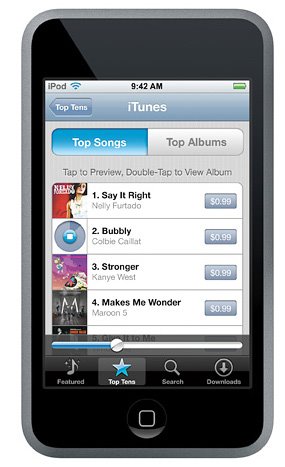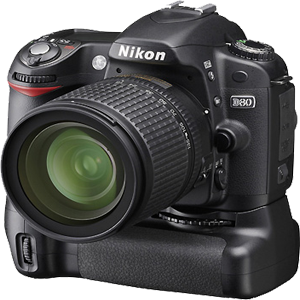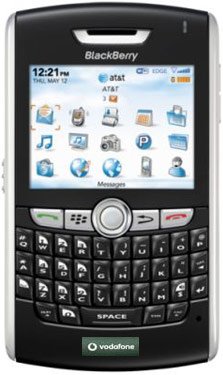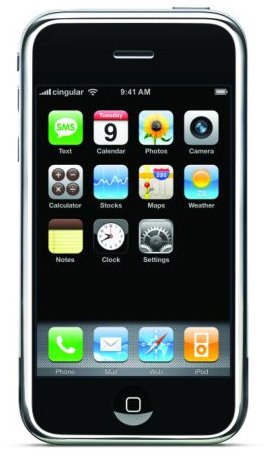
For years, Nikon users had been asking their favored camera maker for a dSLR with a full-frame sensor (the same size as a 35mm frame of film). Finally, Nikon caved, delivering the 12-megapixel D3; the result is a camera that reaches new heights in imaging with extremely low noise at astronomical ISO sensitivities, while maintaining the pro-level control and body design Nikonians have come to expect in the company's flagship cameras. Interestingly, Nikon seems to pit its flagship model against Canon's 10-megapixel EOS-1D Mark III, with its APS-H size sensor, rather than the 21-megapixel, full-frame EOS-1Ds Mark III. That makes sense on some level, though, since the 1D Mark III and the D3 are really all-around cameras that combine the burst speed to handle the demands of sports shooters with ruggedness and image quality that should appeal to news photographers and many others.
Design
Camera body design is an exercise in slow evolution; rightfully so, as current designs are the end products of decades of research going back to the good old film days. The D3 is nearly identical to the D2Xs it replaces. The grip is wonderfully sculpted, arching back toward the top, and with a recessed groove on the inside so your fingers wrap around it rather than giving the impression that you're gripping a bar, as I sometimes feel when holding the 1Ds Mark III.
The weather-sealed magnesium alloy body includes a built-in vertical grip, and like most bodies that do, it's heavy--about 3.2 pounds, before lens. Your arms might ache at first if you shoot for long periods of time and aren't used to a camera this heavy, but over time you'll get used to it, and I find that heavier cameras are more stable when shooting handheld (as opposed to on a tripod). The vertical grip is very nice to have if you shoot verticals often, but while Nikon does include duplicate front and back scroll wheels and AF-On button, I did find myself wishing they had also included a duplicate exposure compensation button as well. Custom functions can help you overcome this, though, if you're willing to dig in to the menus and customize it to your shooting style.
All major controls can be changed through buttons or dials on the camera body, so you shouldn't have to dig through menus while you're shooting. Any buttons that might be accidentally pressed or dials susceptible to inadvertent turning have some sort of locking mechanism to prevent this. There are plenty of options to customize the controls to your needs, and you can even change the direction of the two main wheels that are used to change shutter speed and aperture, as well as the direction of the exposure compensation EV display. In the case of the exposure compensation, it defaults so that positive exposure comp moves to the left while negative moves to the right. This only makes sense if you think about the fact that slower shutter speeds let you achieve positive exposure compensation, but in my world, positive adjustments should move to the right.
Some of the current settings are displayed on the LCD next to the shutter atop the camera, while others, such as ISO sensitivity and white balance, are shown on a smaller LCD below the 3-inch color screen on the camera back. All important info is also displayed in the large, bright viewfinder, which was an absolute pleasure to use when focusing manually, especially compared with lower-end dSLRs whose viewfinders tend to give a bit of a tunnel vision effect. If you're searching for reasons to step up to a pro-level SLR, a finder like this one should be high on the list.
Features
Without a doubt, the feature Nikon shooters have been looking for is this camera's full-frame sensor. Nikon calls this the FX format, in contrast to the 1.5x field-of-view crop offered by its DX-format cameras. Lenses are labeled the same way and if you should choose to mount a DX lens on the D3 (something you can't do with Canon's sub-full-frame EF-S lenses on that company's 1D or 1Ds cameras), this Nikon can automatically adjust for the smaller circle of light shining onto the sensor and crop the image to 5 megapixels. (You can, of course, override this and end up with a 12-megapixel photo with black edges and a circular image in the middle.) Most importantly, all those Nikon users who were told time and again that the company would never go full frame will still be able to use the DX lenses in which they may have invested, though that comes at the cost of a lot of pixels.
Following suit with the latest SLR trends, the D3 offers a pair of live view modes--one for handheld and one for tripod use--which let you frame your images on the LCD. Like most live view implementations, there's a substantial delay when focusing or shooting an image, since the camera has to flip the mirror up to provide the live feed, then flip it down to focus, then flip it up again during image capture. Sony's dual-sensor approach provides a much nicer experience, though you won't find it on a camera of this caliber. It may, however, hit the higher end of the midrange in a full-frame model by the end of this year, or early next.
The other big upgrade on the D3 is its LCD screen. Nikon has stepped up to a 3-inch LCD with 920,000 dots and a 170-degree viewing angle. There has been a lot of debate around the 920,000-dot specification as compared with the pixel spec we usually see in camera specs. We could go around and around on this, but suffice to say that the D3 has one of the nicest LCD screens we've seen on a dSLR so far. Image playback is very nice, but as with any dSLR, you really shouldn't trust the LCD playback too much for checking image quality in the field. You should always check the histogram if you want to verify exposure (make sure it's not bunched up too much to the right or left) and run home to a calibrated monitor if you want a really accurate rendering of your images' color.
Performance
As it should, given the price tag, the Nikon D3 performed quite well in CNET Labs' tests. It took 0.1 second to start up and capture its first JPEG. After that, it took 0.3 second between JPEGs and raw images. Shutter lag measured a very impressive 0.3 second in our high-contrast test and 0.6 second in our low-contrast test, which mimic bright and dim shooting conditions, respectively.
Noise remains well under control through ISO 1,600, and begins to creep up a bit at ISO 3,200 and ISO 6,400. As usual, Nikon includes its Hi1 (12,800) and Hi2 (25,600) settings and you even get third-stop steps up to Hi1, but you have to take a full-stop leap up to Hi2. Hi1 has obvious noise, but depending on the situation, you may be able to eke out some very usable prints, especially at smaller sizes. Hi2 gets rough around the edges, but is still surprisingly decent considering you're shooting at an equivalent of ISO 25,600 at that point, something you just couldn't do with 35mm film. Sorry diehards: your celluloid just can't keep up with digital anymore.
In continuous shooting mode, we were able to capture 37 frames in 3.3 seconds for an average of 8.6 frames per second at full resolution. That's quite impressive and near, but not better than the Canon EOS-1D Mark III's 9.9-frame-per-second burst in our lab. Of course, the D3 does have 2 million extra pixels to process compared with the 1D Mark III. If you're willing to step down to 5 megapixels, Nikon says that the D3 can achieve 11fps in DX crop mode (we only test at full resolution).
The D3's 51-point autofocus with 15 cross-type sensors delivers a major upgrade over the D2Xs's 11-point AF system. It's the same system found in the D300 and the recently announced D700. Just like those cameras, the 1,005-point 3D color matrix metering system works with the AF system to create the camera's 3D-tracking mode, meaning that it has the same quirkiness described in the review of the D300. That means the when you're shooting a subject with colors that contrast substantially with the background colors and will remain in the frame while you shoot it, you should use the D3's 3D tracking mode. If you're shooting something that will move into the frame while you're shooting, then you should opt for the 51-point (or 21-point or 9-point) dynamic AF without 3D. For example, if you're shooting a bird perched on a post and waiting for it to take off so you can get it in action, then you should probably use 3D tracking. If you're framing around a soccer goal and waiting for the player to run into frame and kick the winning goal, you should use one of the non-3D modes.
Image quality
Color accuracy is among the best we've seen in a digital camera, and overall image quality is wonderful, partly attributable to the D3's 14-bit analog-to-digital conversion which feeds into a 16-bit internal processing pipeline. Images show oodles of fine detail, especially at lower sensitivities, and have plenty of contrast. If Nikon is going to take any criticism for the D3, it's likely to be that the 12-megapixel sensor leaves it far behind Canon's 1Ds Mark III, which offers 21 megapixels and produces similarly excellent images. Of course, it's also about $3,000 more than the D3 and tops out at an equivalent of ISO 3,200.
I have to give Nikon a slight edge over the 1D Mark III for its remarkable noise profile, which enables shooting photos that couldn't be captured as they can now. It's more expensive than the 1D, but even in the murky depths of the dank, dark rock clubs of New York's lower east side, the D3 can shoot at speeds fast enough to stop the swaying motion of annoying hipster Axel Rose wannabees as they wail their horribly unoriginal lyrics toward the ears of the drunken masses.
If you're among the Canon crowd whose faith has wavered amidst this year's onslaught of incredible image-making machinery from Nikon, the D3 might be worth the trouble of switching brands (though Canon seems to swear that it has some interesting things in store for us over the next year or so). And if you don't need some of the D3's speed and power, you might want to wait and see how the D700 stacks up as a smaller, less-expensive alternative. But if you're a Nikon shooter and you want the best that the company can offer, the D3 is a no-brainer and significant step up from the D2Xs.




0 comments:
Post a Comment